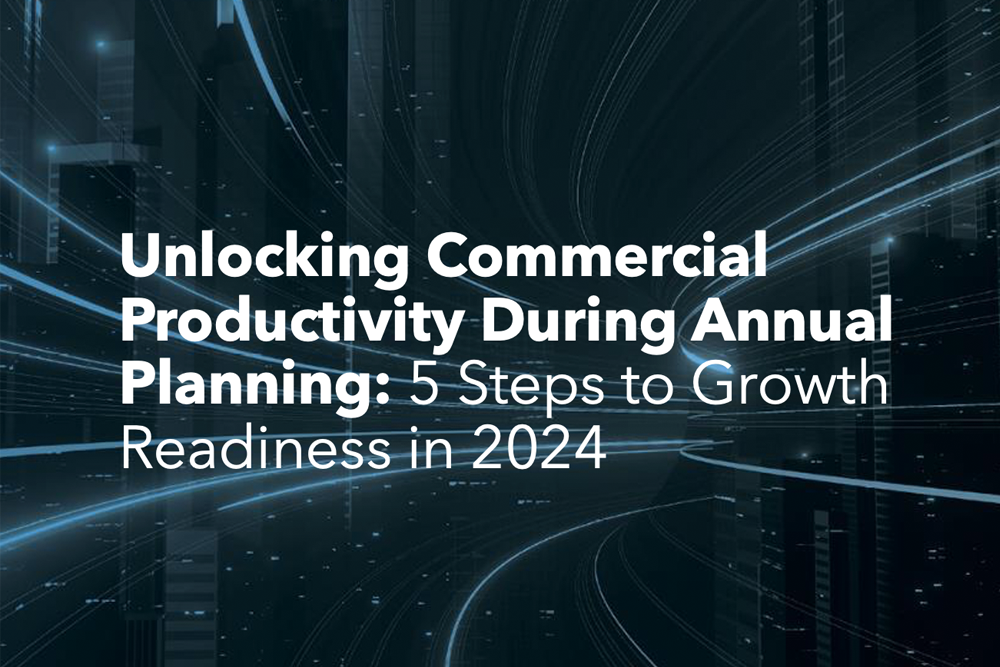It’s annual planning season, and once again, our latest CEO survey findings were a great entry point into SBI’s latest webinar discussion I co-hosted with Tony Erickson, Senior Partner SBI about how to plan for successful commercial productivity in 2024.
Certainly, the 2023 planning environment was affected by the ongoing unpredictability of a volatile business environment. Roughly half of CEOs we surveyed found themselves already changing their plans by Q1 2023 – 49%. And 58% changed their spending (up or down) on their plan.
And while changes in forecasting usually happen around the halfway point of any given year, in 2023, it happened much earlier: in Q1.
Even so, all trends leading into 2024 are showing it’s now beginning to stabilize going into 2024. “It definitely feels a bit more predictable or less volatile if we look into the planning sessions that people are going into right now,” Tony said. “We’re seeing CEOs driving more towards a focus on recovery readiness as opposed to recession readiness.”
And this leads to the key question: “What exactly is the best practice around planning”?
"When SBI thinks about annual revenue planning, the methodology that SBI recommends is tried and true,” Tony went on to say. “We’ve had clients going through this for well over a decade, and there’s a five-step process that we encourage everyone to be following.”
SBI’s 5-step logical sequencing process for revenue leaders
1. Establishment of Fact Base: Where are you now?
“What is it we now know relative to our business or the market that gives us information on what it is we need to be doing for next year?”
2. Inventory Bets: What are the ways you can achieve growth?
“Are we going to be thinking about new markets? Do we have new products to take to market? What are those commercial bets that we should be thinking about relative to growth in the business?”
3. Place Bets: “What are your goals and how can you achieve them?
“You can’t put down two dozen dozen bets and hope one of the pays off because that lack of focus will rear its ugly head and not get you the yield you were looking for. The prioritization of the placement of those bets is important.”
4. Build Revenue Plan: How do you narrow your options and select the best ones?
“You have a top-down revenue plan: what does the board want us to do, and what is the market ready for us to do? But there’s also the bottoms-up element: what is it we can produce with the capacity that we have within the organization”
5. Execute Rollout: How do execute on the bets you placed?
“This is extremely important. You have the facts, you’ve determined the bets, you’ve placed your bets, and you’ve got a revenue plan. Then what?”
The critical first step from which everything else flows
Even though each step in the SBI annual planning process is essential, Tony made it very clear: “It all starts with the fact base”, he said.
“It’s step one intentionally. If we don’t get this right, then we have to question our ability to execute against the four steps that follow it. So to do this, it is important to actually understand the KPIs of your business and how you’re performing against them. You need to have a realistic view of your prior expectations compared to your most recent results, as well as the leading and lagging indicators you’ve measured along the way against those goals.”
So there needs to be an understanding of productivity. And an understanding of how much that opportunities are generated by sales, marketing, or the channel organizations. Or by indirect motions of other types.
It’s also important to understand what the headcount looks like. Should it be raised going into the next year, or should it be decreased?
“And we’ve got to understand what we’re doing to position in the market,” Tony went on to say. “Are we looking to expand through cross-selling? Looking to take share from our competition? Expand through price increases? Ultimately, that’s going to help us understand our revenue goals by product, by geo, by solution area. And that’s going to get us into understanding the market potential – whether we’re entering new markets or doubling down on existing markets, or whether we’re going to be in competitive takebacks, new logos, or if it’s a new market we’re making.”
It's a lot of groundwork to cover. And it’s only the first step. But once the fact base is completely established, it enables revenue leaders to more confidently and readily move to the next steps in the process, which Tony and I also discussed in detail during the webinar.
“By thinking about an annual planning process, we can actually compare our beliefs from 2022 to our actuals using the fact base of 2023 to our expectations in the new plan that we’re building for 2024. Then, we can maniacally track it and course-correct along the way.”
Watch the recording to hear the full story, Unlocking Commercial Productivity During Annual Planning: 5 Steps to Growth Readiness for 2024, now. I encourage you to register for our complete Annual Planning Webinar series.

